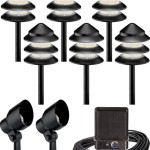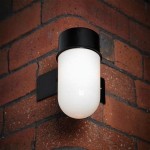What Settings Should I Use for Outdoor Portraits?
Capturing stunning outdoor portraits requires a delicate balance of technical knowledge and artistic vision. The natural light, ever-changing conditions, and the dynamic interplay of subject and environment pose unique challenges. Understanding the fundamental camera settings and their impact on your images will empower you to make informed decisions, resulting in captivating portraits that showcase your subject's beauty and the essence of the outdoor setting.
Aperture: Controlling Depth of Field
Aperture, measured in f-stops, controls the size of the lens opening, directly affecting the depth of field (DOF) in your image. A shallow depth of field, achieved with a wide aperture (low f-stop number like f/2.8 or f/1.4), blurs the background and foreground, isolating the subject and drawing attention to their details. This effect is particularly desirable for portraits as it creates a pleasing bokeh effect, emphasizing the subject's features and conveying a sense of intimacy.
Conversely, a narrow aperture (high f-stop number like f/16 or f/22) produces a deep depth of field, keeping both the subject and the background in focus. This is often preferred for landscape photography or when you want to capture a sense of scale and context. For portraiture, a deep depth of field can be used to include more of the environment in the image or to emphasize the subject's connection to their surroundings.
When considering aperture settings for outdoor portraits, it is crucial to evaluate the desired effect and the interplay between the subject and the environment. For a classic portrait style, a shallow depth of field effectively isolates the subject against a blurred background. However, if the surroundings are visually interesting and contribute to the story you wish to tell, a deeper depth of field might be more appropriate.
Shutter Speed: Freezing or Blurring Movement
Shutter speed, measured in seconds or fractions of a second, determines the amount of time the camera's shutter remains open. This setting plays a crucial role in controlling motion within the image. A fast shutter speed (e.g., 1/500 second or faster) freezes any movement, capturing sharpness and detail. This is ideal for capturing fast-paced action or ensuring sharp images of subjects in motion.
Conversely, a slow shutter speed (e.g., 1/2 second or slower) allows motion blur to occur. This technique can create a dreamy, ethereal effect, portraying movement and conveying a sense of dynamism. It is often used to capture flowing hair or water, or to convey a sense of motion in portraits.
When shooting outdoor portraits, consider the movement of both the subject and the environment. If capturing a posed portrait, a fast shutter speed will ensure sharpness. However, if you want to introduce a sense of movement or capture a more dynamic composition, a slower shutter speed can be utilized. Experiment with different shutter speeds to find the best approach for your specific photographic vision.
ISO: Sensitivity to Light
ISO, or International Organization for Standardization, measures the camera sensor's sensitivity to light. A low ISO setting (e.g., ISO 100 or 200) indicates low sensitivity, requiring ample light for a proper exposure. This often results in images with less noise and finer detail.
A high ISO setting (e.g., ISO 1600 or 3200) indicates high sensitivity, allowing for shooting in low-light conditions. An increase in ISO sensitivity comes at the cost of introducing noise or grain in the image. While noise can be minimized through post-processing, it is generally preferable to use the lowest ISO possible for optimal image quality.
When shooting outdoor portraits, aim to maintain a low ISO whenever possible to preserve image quality and detail. However, if shooting in shaded areas or as the sun begins to set, you may need to increase the ISO to compensate for the lower light levels. Prioritize a low ISO setting for the best image quality, but be prepared to adjust it based on the lighting conditions.
Remember, the settings discussed above – aperture, shutter speed, and ISO – are interdependent and influence each other. Mastering the interplay between these settings is a fundamental aspect of photography. Experiment with different combinations and observe how each setting affects the final image. This practice will refine your understanding of photography and empower you to create stunning and impactful portraits.

Settings For Portraits Taken Indoors Outdoors

How To Take Outdoor Portraits Like A Pro Live Snap Create

Settings For Portraits Taken Indoors Outdoors

10 Settings And Equipment Tips For Portrait Photography

How To Take Outdoor Portraits Like A Pro Live Snap Create Digital Photography Lessons Basics

How To Take Outdoor Portraits Like A Pro Live Snap Create

What Is The Best Setting For Outdoor Portraits With Examples Formed From Light

Settings For Portraits Taken Indoors Outdoors

Settings For Portraits Taken Indoors Outdoors

On Flash Outdoors Tangents
Related Posts







